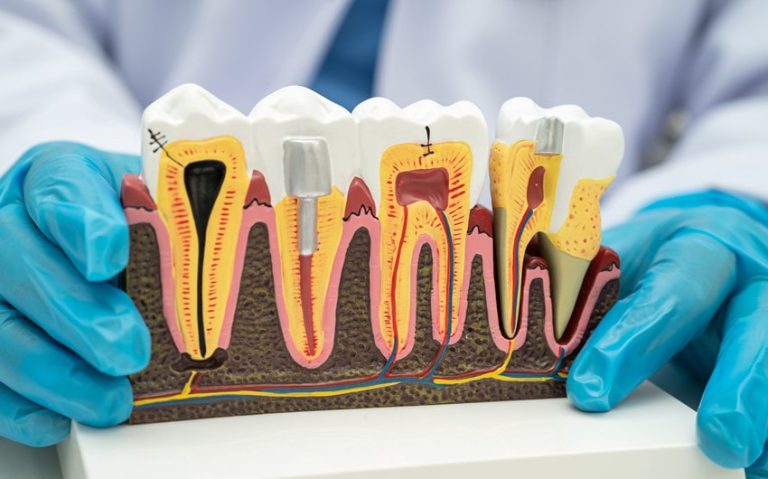When to Take a BPD Test (and Why It Can Be Life-Changing)
Some people feel too much. Their emotions are too quick, too deep, too frequent. One moment you’re okay, and the next, you’re overwhelmed by sadness, anger, or fear that seems to come out of nowhere. Relationships can feel like a minefield. You try to connect, but things keep falling apart.
Taking a BPD test makes you understand your emotional patterns, where they come from, and what kind of support might actually help. In this article, we’ll explore when it makes sense to take an assessment, how to approach the results, and why getting clarity can be the first step toward emotional stability and self-compassion.
When to Consider Taking a BPD Test
Borderline Personality Disorder (BPD) is misunderstood. Even people who might have this condition easily misinterpret it. Some grow up believing they’re “too sensitive,” “too intense,” or simply “bad at relationships.”
Online quizzes don’t aim to be diagnosis tools, but they can reflect deeper struggles. If this resonates with you, taking a BPD test based on DSM-5 criteria can be a reasonable first step toward understanding long-standing emotions that might otherwise go unnoticed. If given honest answers, this test will discover your emotional history, which will help to normalize your responses and invite curiosity to explore further options.
Emotional Patterns that May Point Toward Borderline Personality
You might want to consider a BPD test if you:
• Experience overwhelming emotions that shift rapidly from anger to sadness to numbness, sometimes within hours.
• Struggle with intense fears of abandonment, even in stable relationships.
• Have a history of unstable relationships, where idealization turns to devaluation quickly.
• Feel chronically empty or unsure of who you are when you’re not reflecting on someone else.
• Engage in impulsive behaviors to escape emotional pain. This could include self-harm, bingeing, or reckless spending.
• Carry a deep sense of shame, unrelated to anything you’ve done.
• Swing between craving closeness and pushing people away.
Have You Been Misdiagnosed in The Past?
It’s especially worth considering a BPD test if you’ve been misdiagnosed in the past. A trusted study from the Journal of Psychiatric Research shows that many individuals living with BPD were first identified as having anxiety, depression, or bipolar disorder [1]. While these may co-exist, they don’t fully explain the intense relational and emotional shifts that define BPD.
Because these patterns overlap with other conditions, BPD is frequently misdiagnosed. People are sometimes told they have:
• Bipolar disorder, due to mood fluctuations. Though BPD’s emotional changes are usually faster and tied to relationships or rejection.
• ADHD, because of impulsivity and emotional reactivity.
• Complex PTSD, especially when there’s a history of trauma and difficulty with emotional regulation.
These misdiagnoses don’t come from bad intent. They stem from the fact that BPD doesn’t show up in everyone the same way. Some people are high-functioning. Others hide themselves behind perfectionism or people-pleasing.
Why a BPD Test Can Be Life-Changing
Taking a border personality evaluation isn’t just about getting answers. You reclaim control over your thoughts and doubts. It is scientifically proven that online psychoeducation and digital assessments are much more valuable than sitting around, waiting for the right time to get diagnosed [2]. When taken seriously, a well-crafted online quiz can:
• Validate years of confusing emotional experiences.
• Challenge negative narratives like “I’m just too much” or “I ruin everything.”
• Prompt further evaluation and, access to the right support. Professionals recommend Dialectical Behavior Therapy (DBT), which is designed explicitly for BPD.
• Help you better understand how your emotions, identity, and relationships are shaped by invisible patterns and how you can shift them.
Realizing that your experience has a name can be both grounding and empowering. It may mark the beginning of better boundaries and healthier relationships with both others and yourself.
What a Good BPD Test Should (and Shouldn’t) Assess
Taking a BPD test isn’t about labeling yourself. You just try to make sense of experiences that might have felt chaotic, shameful, or “too much” for too long. A well-constructed assessment should reflect emotional and behavioral patterns over time, not just how you’re feeling in a single moment. Look for tests that ask about long-term tendencies rather than only symptom checklists.
The best BPD screening tools are evidence-informed. That means they’re based on research and clinical observation, not stereotypes or pop psychology.
They should provide thoughtful results that help you recognize potential patterns, and they should never be used as standalone diagnostic tools. Here’s a quick comparison to guide you:
| Feature | Good Online BPD Test | Poor-Quality BPD Test |
| Based on clinical frameworks | Draws from DSM-5, DBT, or expert-informed tools | Relies on vague or unscientific criteria |
| Focuses on patterns over time | Asks about emotional history and relationship patterns | Focuses only on current mood or dramatic scenarios |
| Provides constructive feedback | Offers reflection prompts or next steps | Uses dramatic labels like “toxic” or “dangerous” |
| Reduces shame and stigma | Normalizes emotional responses and invites curiosity | May feel judgmental, blaming, or overwhelming |
| Encourages seeking support | Suggests professional help or trusted resources | Gives rigid labels without follow-up |
What to Do After the Borderline Personality Test
Taking a BPD test can bring up big emotions. Whatever your result, here’s how to move forward with care and insight:
• Pause before reacting. Let the result sink in without rushing to conclusions. It’s one data point, not a complete diagnosis.
• Reflect on your patterns. Revisit moments where the traits mentioned in the test showed up in your relationships, self-image, or emotional reactions. Journaling can help you spot recurring themes.
• Share with someone safe. Speak to a trusted friend or therapist who understands emotional sensitivity. An outside perspective can help you make sense of the result with more context.
• Seek a professional evaluation. A licensed mental health provider can explore whether the patterns in your life align with borderline personality or something else entirely.
• Practice self-compassion. A test may point to emotional pain, but it doesn’t define you. People who live with traits of borderline have been misunderstood for years. That doesn’t make their experiences less real or worthy of care.
Your next steps don’t have to be drastic. After reaching out for help and getting mental support, up to 60% of people with a borderline personality diagnosis recover and only have mild symptoms left [3]. Be curious, not critical.
References:
1. Borderline personality disorder and the misdiagnosis of bipolar disorder. Journal of Psychiatric Research. April 2010.
2. Online psychoeducation and digital assessments as a first step of treatment for borderline personality disorder: A protocol for a pilot randomized controlled trial. Plos One. December 2023.
3. Life after Borderline Personality Disorder. Scott D. Marder, MD. September 2022.







